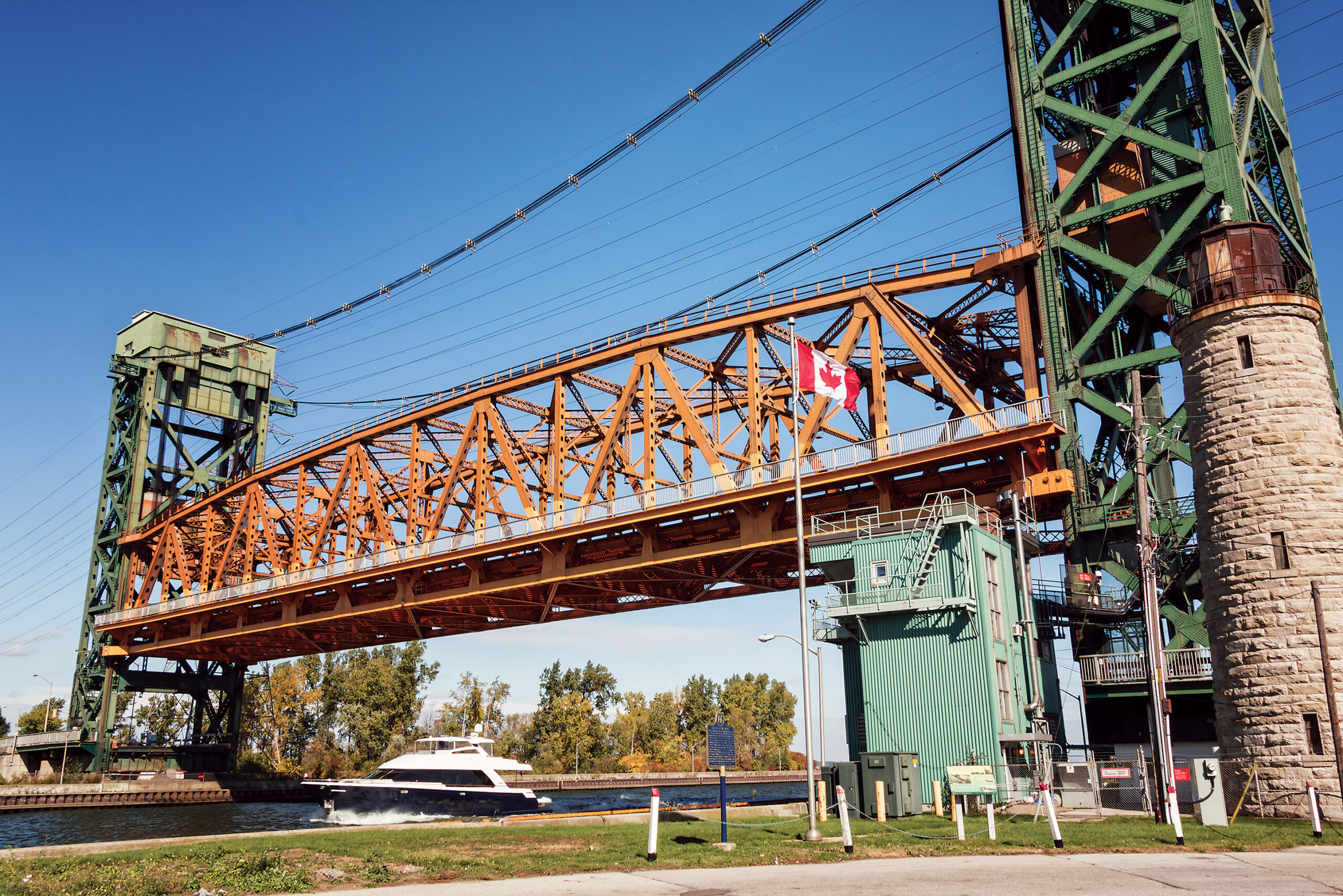
OHS due diligence must be visible: Courts must give clear, comprehensive reasons in their judgements
By Norm Keith/KPMG Law LLP

The Burlington Canal Lift Bridge in Hamilton, Ontario, Canada. Photo: Adobe Stock
A recent Ontario court decision provides some insight into why trial courts must give clear and comprehensive reasons in their judgements in occupational health and safety prosecutions.
The case is a reminder of the fallibility and the limitations of the judicial system as a means to improve workplace safety. The case also has important implications for the legal defence of “due diligence” to the OHS profession. Since due diligence is judge-made, hopefully this case will promote clear reasons for judgement regarding the defence of due diligence in future OHS prosecutions.
The Burlington case involved maintenance workers at a Canal Lift Bridge in Burlington, Ont. The workers were using rope attached to a machine to pull an aerial cable over the span of a bridge. In course of the work, the rope broke, and the sudden release of tension caused the cable to whip backward — severely injuring an employee of the maintenance company involved in the work.
The Ontario regulator investigated the accident and eventually charged the employer with five charges under the Occupational Health and Safety Act (OHSA). As in all OHS prosecutions, one of the defences available to the employer to respond to the OHS charges was the defence of due diligence.
Theoretical and practical aspects
The seminal case of Sault Ste. Marie provided the clear and enduring legal standard for the “due diligence defence.” The defence has both a theoretical and practical aspect.
The theoretical aspect is the requirement to have an occupation health and safety management system (OHSMS) that has identified, assessed and either eliminated or provided controls for workplace hazards consistent with applicable OHS law.
The practical aspect of the defence is the requirement of the employer prove the effective implementation of the OHSMS in the workplace where the incident took place. In an OHS trial, a judge’s reasons must address both aspects of the defence and be available to scrutiny by an appeal judge if there is an appeal by either party affected party.
In the Burlington case, after a lengthy and expensive 13-day trial before a Justice of the Peace, the employer was convicted of four of the five charges. The convictions were appealed by the employer. The employer argued on the appeal that the reasons for judgement were not clear or even comprehensible.
In her decision, Justice J. Campitelli said the following about the Justice of the Peace reasons for judgement that resulted in the conviction:
• “It is impossible to determine how the issues presented at trial were resolved”
• “It is unclear whether the Justice of the Peace made any findings of fact or drew any relevant inferences from the evidence”
• “The reasons for judgment are completely silent with respect to any legal analysis the trial Justice may have engaged in with respect to the issues raised at trial.”
The appellate court also went on to say that the “… Justice of the Peace [is] accountable to the public for the judgements they render.” The poor quality of the reasons for judgement also “… denied the Appellant a meaningful appeal [on the defence of due diligence] and resulted in a miscarriage of justice.”
The trial judgement in the Burlington case failed to provide any explanation for rejecting the due diligence defence. The absence of adequate reasons was held on the appeal to be a legal error. The appeal was allowed, the trial judgement was overturned, and the case was sent back for another trial.
This resulted in significant legal costs to the employer, the public for costs incurred by the OHS regulator and the costs to the administration of the judicial system for a new trial.
From a safety profession perspective, there are additional implications of the Burlington case:
1. The parties to the proceeding, typically the employer and prosecuting OHS regulator, should know why the trial court did or did not accept the due diligence defence in the reasons for judgement;
2. OHS legal enforcement needs to be credible and beyond reproach to enjoy public confidence; a failure to have clear and comprehensive reasons for judgement to meet the needs of the parties, the public, and to OHS professionals;
3. OHS cases decisions establish precedents in the application of the due diligence defence in a particular industry; since the law has an educational role for workplace stakeholders and OHS professionals in that industry to prevent future legal contraventions and workplace accidents, reasons for judgement are critical.
In my experience, due diligence case law may also be very helpful for OHS professionals to review for “lessons learned” in their workplace and industry. I have spent a great deal of time using real OHS court decisions as case studies to help employers, management and workers understand how to improve OHS in the workplace.
For example, in my one-day course, ‘OHS Law and Due Diligence for Managers and Supervisors’, case studies illustrate the principles of an effective OHSMS and the legal defence of due diligence.
Legal errors reversable on appeal
In summary, the Burlington case makes it clear that if the due diligence defence is not reviewed, analyzed and explained by the trial court, this amounts to a legal error reviewable and reversable on appeal.
Employers need to know that their investment in an OHSMS can be relied upon in an OHS prosecution to provide the defence of due diligence. OHS prosecutions may be initiated by politically motivated OHS regulators, angry family members of injured workers, or communities seeking revenge rather than justice.
The justice system needs to provide a fair trial and be trusted to consider and weigh the evidence of the due diligence defence in all cases. For that, we need clear and comprehensive reasons for judgement.
Finally, it must be remembered OHS prosecutions are serious legal proceedings with serious penalties for defendants being prosecuted. Directors and officers of corporations in Ontario can now be fined up to $1.5 million per offence and jailed for a year, or both.
The fair trial rights of defendants should not be sacrificed on the alter of regulatory expediency, public opinion or emotional reactions to hard facts. OHS prosecutions may cripple businesses financially, ruin careers of managers and supervisors, and damage the reputation of all involved regardless of the outcome at a trial.
Since due diligence is a judge-made defence, based on binding precedents, the Burlington case makes it clear that trial justices need to provide reasons for judgement, especially regarding the defence of due diligence, in a manner that is clear and comprehensive based on the evidence before the court.
 Norm Keith is a management-side employment and labour lawyer at KPMG Law LLP. Most notably he is one of the leading Occupational Health and Safety (OHS) lawyers in Canada. Additionally, Norm represents businesses in regulatory and white-collar crime investigations. He has successfully defended more than 1,000 OHS regulatory, criminal and related charges. For more information, visit https://kpmg.com/ca/en/home/contacts/k/norm-keith.html
Norm Keith is a management-side employment and labour lawyer at KPMG Law LLP. Most notably he is one of the leading Occupational Health and Safety (OHS) lawyers in Canada. Additionally, Norm represents businesses in regulatory and white-collar crime investigations. He has successfully defended more than 1,000 OHS regulatory, criminal and related charges. For more information, visit https://kpmg.com/ca/en/home/contacts/k/norm-keith.html